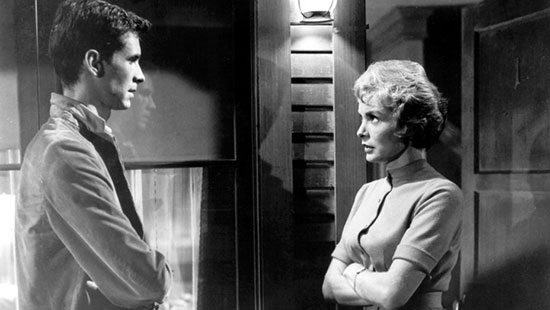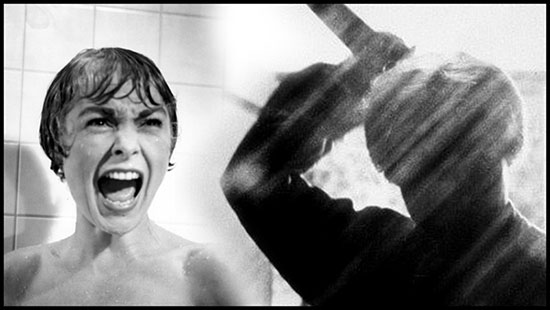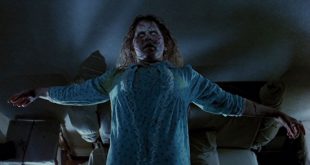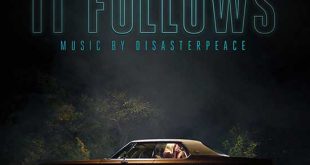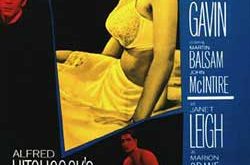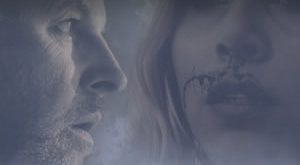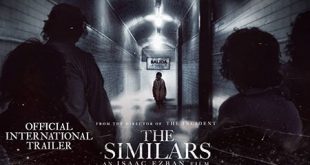Movie: Psycho (1960) – Questions and Answers
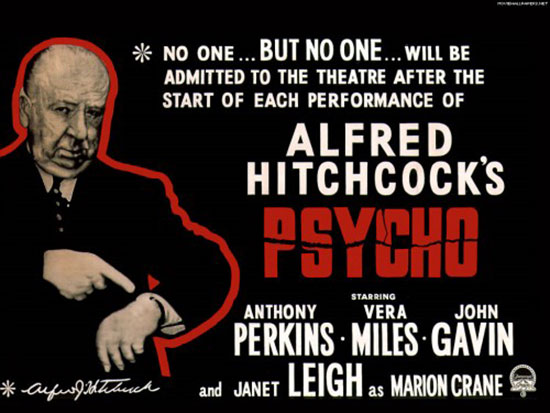 WHERE DID THE ORIGINAL CONCEPT COME FROM?
WHERE DID THE ORIGINAL CONCEPT COME FROM?
The initial concept came from the Robert Bloch’s novel Psycho (1960) inspired from the horrific crimes committed by serial killer Ed Gein, who murdered (to say it mildly) 40 women over a course of 10 years met with mixed reviews (which have changed, greatly to extremely positive reviews) but sold nicely. It was from here, things went negative for Block, the rights of the novel purchased to a secretive buyer for $10,000 he and his agent tad unfamiliar with the movie business; saw no bonus, profit sharing. Later he discovered that Alfred Hitchcock garnished all the rights, it was the height of his career in the late 1950s and recognize then and to this day, as the Master of Suspense, and highly likely no one will ever replace him.
WHAT IS THE Psycho (1960) FILM ABOUT?
While the summary might seem mild, Marion Crane (Janet Leigh), a secretary recklessly embezzles $40,000 from her employer’s client in a desperate situation to help her boyfriend Sam Loomis, she goes on the run and gets lost, thereby checking into the Bates Motel and meeting Norman and his Mother. However, in actuality the story goes much further, with regard to duality in multiple layers and deep psychology impact, and even a slight foreshadowing to another future picture of Hitchcock. The influence continues to this day, from the music, lines of dialogue and of angles represented in shots on film.
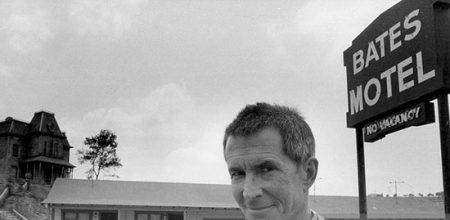 WHY DID HITCHCOCK DECIDE TO MAKE THIS TYPE OF FILM?
WHY DID HITCHCOCK DECIDE TO MAKE THIS TYPE OF FILM?
Hitchcock, wanted something different for his 47th feature, while studios sought him for more thrillers namely Dr. No the first James Bond, however he was less interested, likely because of his classic movie, North By Northwest (1954) which had many of the similar themes in the Bond legendary franchise. An assistant who showed him the book Psycho, and it was the shocking words and scenes that hooked Hitchcock, however, it was something else which made him start looking at the horror genre.
He saw the writing on the wall, the culture of audience and people in general starting to change, and a man named William Castle, who considered himself the Hitchcock of Horror. Hitchcock driven by a Castle film at a theater, with a line outside and ambulance waiting outside (obviously for publicity attraction), and there his ego took hold, and he investigated quietly how to a film like his came to creation, how to significantly make it much better and show everyone his was capable of creating suspense in any genre.
WHAT PROBLEMS PLAGUED THE PRODUCTION OF THE FILM Psycho (1960)?
The first hurdle come from studio, Paramount who panned on the project (namely the subject material) they didn’t see the benefit, or willingness to back the movie as Hitchcock’s contact end-date was coming with one more picture. Next, the production, with no official backing, Hitchcock passed on his director’s fee of $250,000 ($2 million in today’s money), in exchange for 60% ownership in the negative and did the film on $800,000, first to find a screenwriter settling on Joseph Stefano while getting everything for production in October 1959. He used his Alfred Hitchcock Presents television crew who were very familiar with his style and able to work on tight shooting schedules and all loyal to the director and swore oaths to him during the production. Meanwhile, Hitchcock worried about the publicity and marketing angle, namely releasing his own vague photographs since he was actually against stills, as he liked to keep secrets from prying eyes. One of the issues of the production came from the infamous shower scene, which of course led to battles with the MPAA and the censor boards.
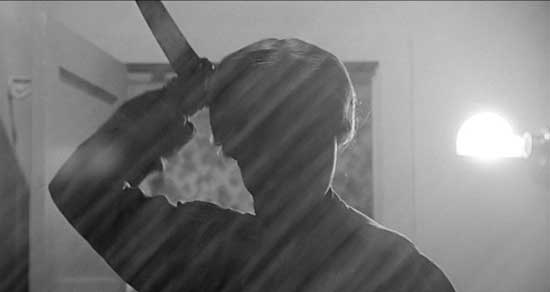
The shower scene had a fully functioning bathroom stall, working spigot and drain. The closed set only had body doubles and only essential personnel were allowed. The scene had many set-ups and changes, and of course it did contain a glimpse of a nudity which was a forbidden issue. Now some think that it’s no big deal but remember the era, married couples in separate beds, and many words require writers to think of ways around censor’s boards. An additional problem came from showing a toilet, let alone a flushing one, it seems bizarre but no film up to that point had done with, and it became a great fight for Hitchcock but he won in the end with revealing a hint of story to them. As for the scene involving the shower, he bluffed his way through, as the censors’ note made little difference, first they stated one thing and then change it to another, and back again, which informs anyone they had no clue of what they actually witness. Lastly, the deviant behavior of Norman’s own duality, but the laws of society intervened and solved the situation on the screen, which calmed the nerves of the MPAA board.
WHY DO THE BIRDS PRESENT THEMSELVES SO BOLDLY?
The birds give a sense of the pecking order of society, the watchful eye, over all beneath them, the care Norman exhibits for them, cares through the entire franchise, however to this movie, the manner that Marion eats mimics a bird, small nibbles. Then to the larger insight, her last name Crane, she’s from Phoenix, and other pretty birds noting the lost innocence, as she and Norman entered into traps in life and thereby fallen to the predatory nature of society. Nevertheless, it goes much deeper, Hitchcock uses the Owl for example, as a connection to his Mother, watching over him at night, his duty to obey and yet feels guilt when engaging in voyeurism via a peephole.
In Psycho (1960), WHY IS THE SHOWER SCENE SO LEGENDARY IN CINEMATIC HISTORY?
Simply stated, nothing quite like it ever existed before, this indeed a very shocking scene, which first was without music, but Hitchcock’s famed composer and his wife insisted that it must contain the notes, it later proved the right decision. The numerous cuts and the downward thrusts of the blade, including the shadowy figure in the entering the bathroom, all continue to find themselves repeating in the horror genre, as well as all other genres. In fact when young directors (who surprising unaware of this film) do something similar to Hitchcock’s work they find themselves immediately called on it by countless critics, and studious fans. It also contains a bit of a psychological impact, Marion scrubs away the sin, cleaning herself of the crime, not to flee further but rather return and face the consequence of her trap in life. Lastly, the usage of chocolate syrup as the blood coloring, as it looks like the real thing, in a black and white movie.
WHAT SYMBOLS AND IMAGERY STAND OUT IN THE FILM, Psycho (1960)?
The subtle usage of the undergarment of Marion’s in the beginning the of the movie its white, noting the innocence, but after she steal’s the money it becomes black, and hence corrupt, this played with the audience and with Hitchcock’s moral rules. Another example with reference to the patrol officer Marion meets, a straight-on close up shot of him, the dark sunglasses marks him as intimidating and the passes onto her nervous actions an abrupt speaking. It also goes deeper. Hitchcock had a fear of police officers, hence never learning to drive, dating back to his childhood.
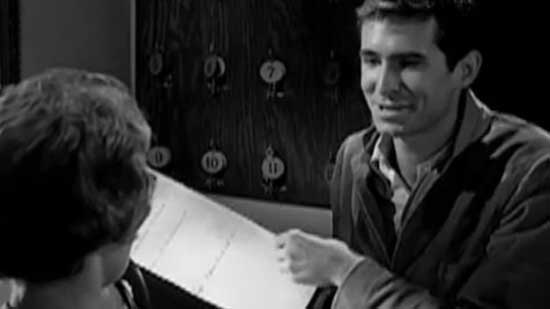
WHAT IS THE MOST COMPLEX SCENE IN THE FILM?
While the shower scene garnishes the most attention and for justified reasoning, another key and hard scene to do, comes from (warning spoiler) the death of Detective Milton Arbogast (Martin Balsam), while in the Bates’ house. He walks up the stairs the camera show the feet, a common aspect shown in the placement of individuals the usage of music setting the scene. An overhead shot (common for Hitchcock to use bird’s eye often deployed in his other movies), for the killing, of the door opening slowly, the person hidden from the direct line of sight for the audience (a woman likely), the deed sudden. All of it working the achieve tension at the height of the kill, the suspense gone leaving Arbogast stumbling backwards down the stairs, shock and terror for him and the audience. The killer descends to finish the kill, and this sequence repeated often in horror films.
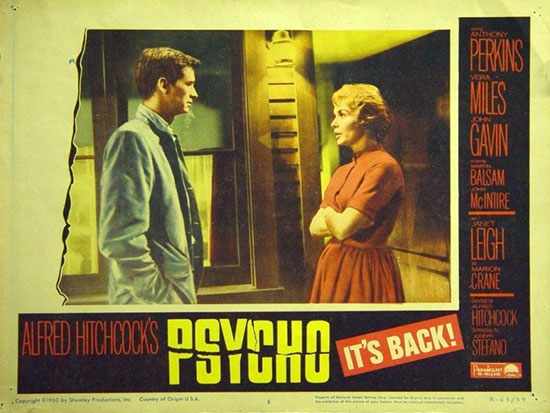
WHAT PSYCHOLOGY IMPACT TRANSCENDS FROM SCREEN TO THE AUDIENCE?
Many impactful scenes transcend to the audience, aside from the shower scene, which many people to this day state most fearful of them, someone walking in on them, let to kill them, in their intimate moment and highly defenseless.
However, the largest psychological moment, comes from Norman’s discovery of his mother’s action, the murder of Marion. We the audience, not knowing anything the first time watching the movie, feel sorry for Norman, he stated a son’s best friend is his mother, and she’s going a tad mad clearly means his first erase her existence. He dutiful cleans the area, removing no trace, his nervous actions of what to do, but it is the sinking of the car which captures everyone into a moment of guilt after the crime, as everyone wants to protect their mother, to assist in moment of need regardless of consequence if they truly honest with themselves. As the car pauses in the sinking a great feat from Hitchcock, the viewer edges on their seat, willing it to sink, perhaps chanting sink, sink, we want Norman to succeed.
WHY DID PART 2 of the Psycho Film Series TAKE SO LONG TO MAKE?
A lot of discussion over this issue, likely the ownership rights of Hitchcock, prevented a sequel, as he passed on in August of 1980, and the credits of the part 2 (a very good movie) note and honor him as Sir Alfred Hitchcock.
HOW MANY SEQUELS AND SPIN-OFFS CAME FROM THE 1960 CLASSIC?
A total of 4-main sequels, Psycho II (1983), Psycho III (1986), Psycho IV: The Beginning (1990) this last one in 1987 Bates Motel aired, though labeled as a TV Movie, actually was pilot, especially how it ends. Then in 1998 the disastrous remake came to theaters, a near shot for shot film, and recently the Bates Motel (2013 TV-series).

WHY DOES THE FILM Psycho (1960) CONTINUE TO HAVE INFLUENCE?
Filmmakers, as well as writers, composers too like to pay homage to the masters of the industry, and Hitchcock often passed over for many Oscars, likely because of his mannerism on set, and egoistical reasons, everyone who studies film and techniques know of his influence. Let’s look at a few films first, The Texas Chain Saw Massacre (1974) for as material of Ed Gein and also the implied scenes of violence via meat hook and the chainsaw killing of Franklin (Paul A. Partain) just like the shower scene at no time did the knife penetrate the body, and those weapons neither did it either. Next, Halloween (1978) a clear reference to the character of Loomis, i.e. Dr. Loomis (Donald Pleasance), it relates back to Sam Loomis character.
Then 2-years later Friday the 13th, a film which would later connect a few similar manners back to Psycho), and which include composer Harry Manfredini ode to Bernard Herrman, who often worked on Hitchcock films, his references to Psycho heard clearly in the Friday the 13th production. Later in 1996, with Scream, concerning the character name Loomis again, and later with the line “We all go a little mad”. In fact extending on the point of music, it appears in Re-Animator (1985) and a brief scene in Halloween H20, when real life mother and daughter Leigh and Curtis share the screen before she walks over to a car similar to the one in Psycho. As for the shower scene itself, found often, in many tv-shows, to pranks and from a low-budget horror movie such as Killer Workout (1987) to the comedy legend Mel Brooks’ High Anxiety (1977) a must see for any cinema fan.
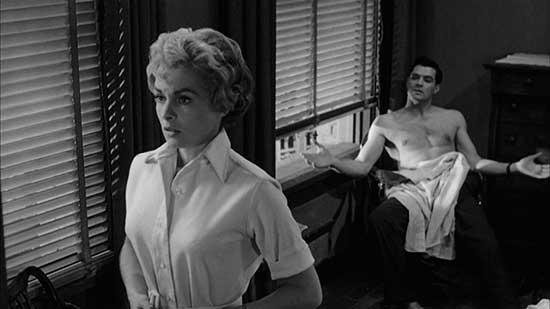
WHAT IS YOUR FINAL THOUGHTS ON THE MOVIE Psycho (1960) AND ITS IMPACT ON CINEMA AND THE HORROR AUDIENCES?
In my opinion Sir Alfred Joseph Hitchcock’s work lives on, for countless generations for cinema fans to enjoy, scholars to pour over endless and filmmaker’s to constantly learn new techniques to engage with their audiences, achieving the level of shocks, suspense, and terror to carry-over into their personal lives, long after a film ends. Hitchcock’s success of the film and in general shows what pushing the boundaries can for the filmmaker and of course, the genre. For many, Psycho represents the first entry into the subgenre of slasher movies and it’s music and scenes will continue to influence films and audiences.
 Horror News | HNN Official Site | Horror Movies,Trailers, Reviews
Horror News | HNN Official Site | Horror Movies,Trailers, Reviews
